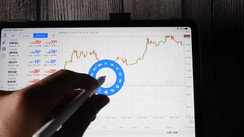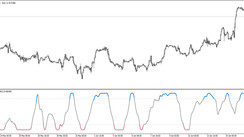The Sveriges Riksbank, also known as the Riksbank, is the central bank of Sweden. It is very well known as the oldest central bank of the world and the third oldest bank in operation.
The name of the bank can translate to Sweden's realm's bank, but the bank doesn't translate it to other languages and instead uses the original Swedish term, the Riksbank in official English and international communications.
The history behind the Sveriges Riksbank
The Riksbank began its operations in 1668, but previously it was served by the Stockholms Banco or the bank of Palmstruch, which was founded by Johan Palmstruch in 1656. This was a private bank, but the king was in charge of its management. The Stockholms Banco collapsed as a result of issuing way too many notes without the necessary collateral.
Due to the mistakes and failure of Stockholm Banco, the bank was managed under the direct control of the Riksdag of the states as a way to prevent the interference from the king.
Later on, in 1866, the name of the bank was changed to the one we use nowadays, Sveriges Riksbank.
Having learned the hard lesson of the Stockholms Banco, the Riksbank didn't have the permission to issue bank-notes, but later on, the license was granted to produce paper for bank-notes and a paper-mill.
Some years later, the first commercial banks were founded in the country, and they were also allowed to issue bank-notes. The Riksbank began to work entirely as a central bank back in 1897. This was when the first Riksbank act was accepted concurrently with a law giving the bank the exclusive right to issue bank-notes.
Back in the day, the Swedish currency was backed by gold, and the paper-certificates could be exchanged for gold coins until 1931. The new constitution was made and ratified in 1975, which split the bank from the government into a stand-alone organization with no obligation to exchange notes for gold.
Back in November of 1992, maintaining the fixed peg of the Swedish Krona was becoming increasingly difficult despite the Riksbank’s efforts, and was subsequently abandoned as a result. Later, in 1993, the Governing Board of the Sveriges Riksbank decided to change the course of monetary policy by introducing inflation target and a free exchange rate of the Krona.
What is its role?
The bank has adopted the motto "Herefore strength and safety". It refers to the bank acting as the guard of the financial system of the country.
The Riksbank is in charge of monetary policy with the primary objective of maintaining price stability. The bank also has the task of promoting a safe and efficient payment system. As a central bank, it has the responsibility of managing the internal economy of the country through controlling monetary policy.
How is it organized?
An executive board consisting of six members is in charge of leading the Riksbank. The General Council appoints the members of the supervisory board. The Riksbank consists of seven departments: The Corporate Services Department, The Financial Stability Department, The Markets Department, The Monetary Policy Department, The Payments Department, The Internal Audit Department, and the General Secretariat.
Every head of the department and the communications manager participate in the Riksbank's Management Group. The Group coordinates the Riksbank's activities, and the Head of the General Secretariat is in charge of leading it.
How to trade using it as reference
To use this bank as a reference while trading is to see it as any other central bank with the authority of impacting the foreign exchange market and how traders around the world perceive their currency.
The good trader has to take an in-depth look at how this bank works when it comes to making decisions and how often do they make decisions. This way, the trader will always be one step ahead of the rest and will win the power to make great trading choices.





